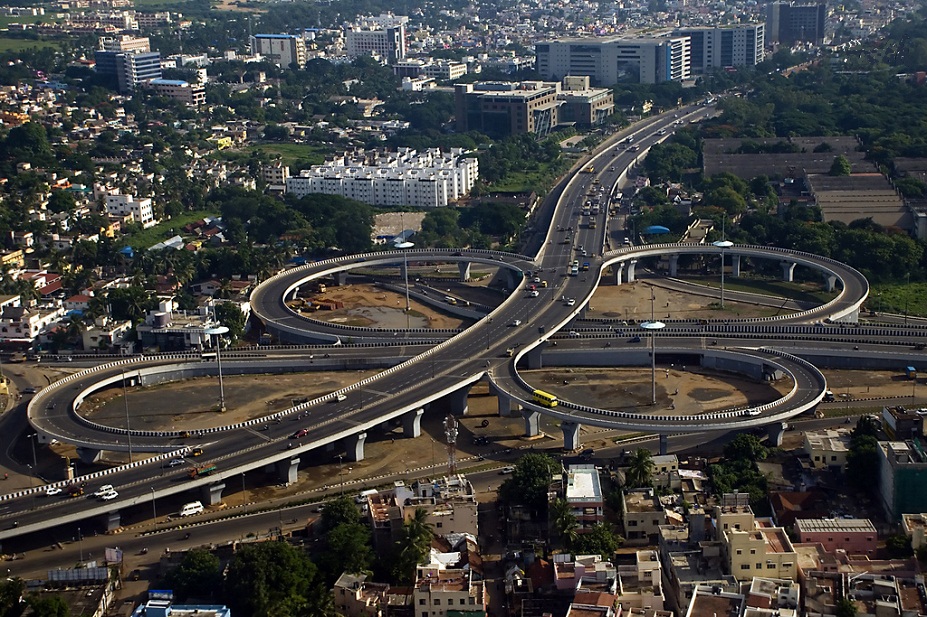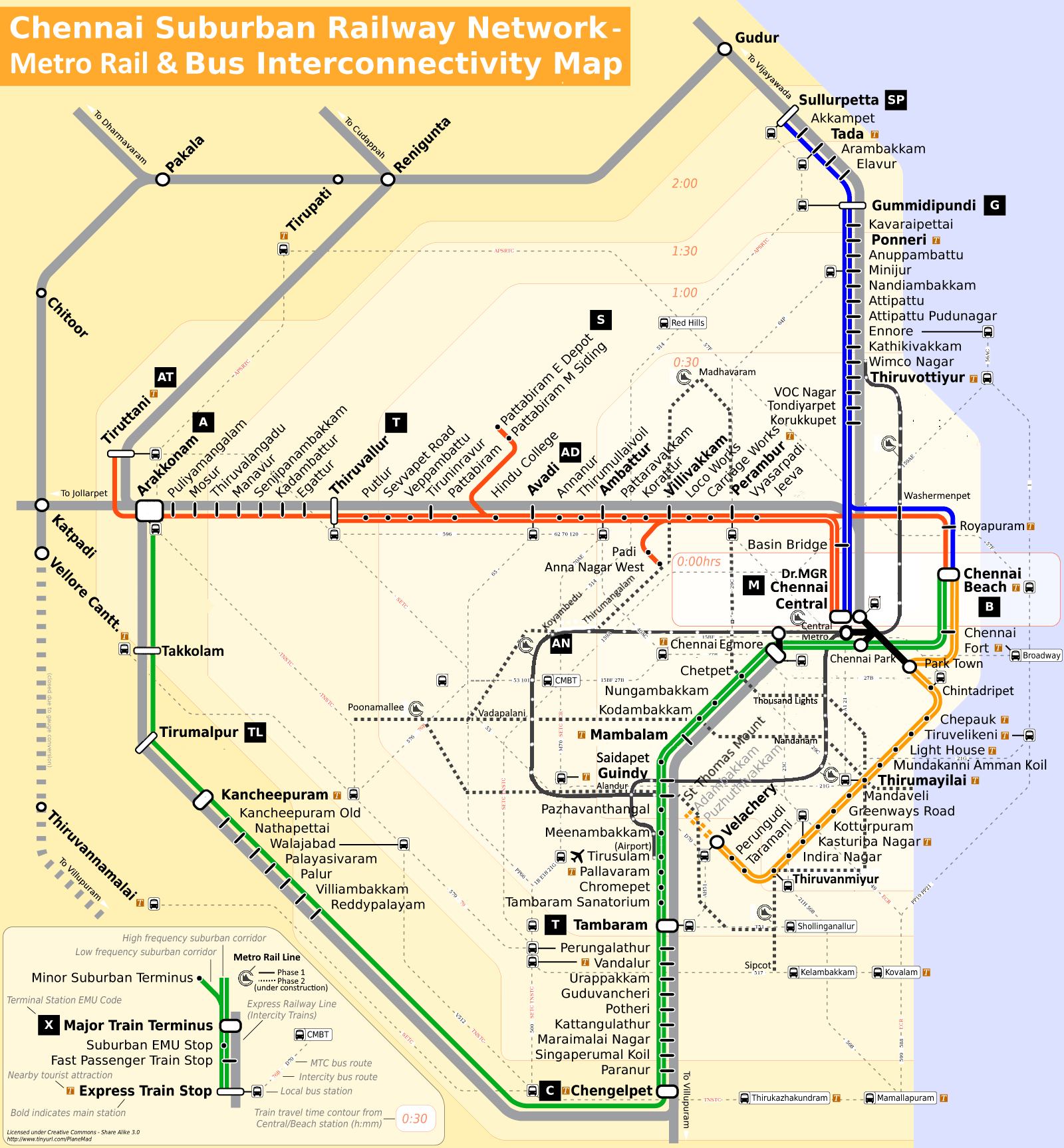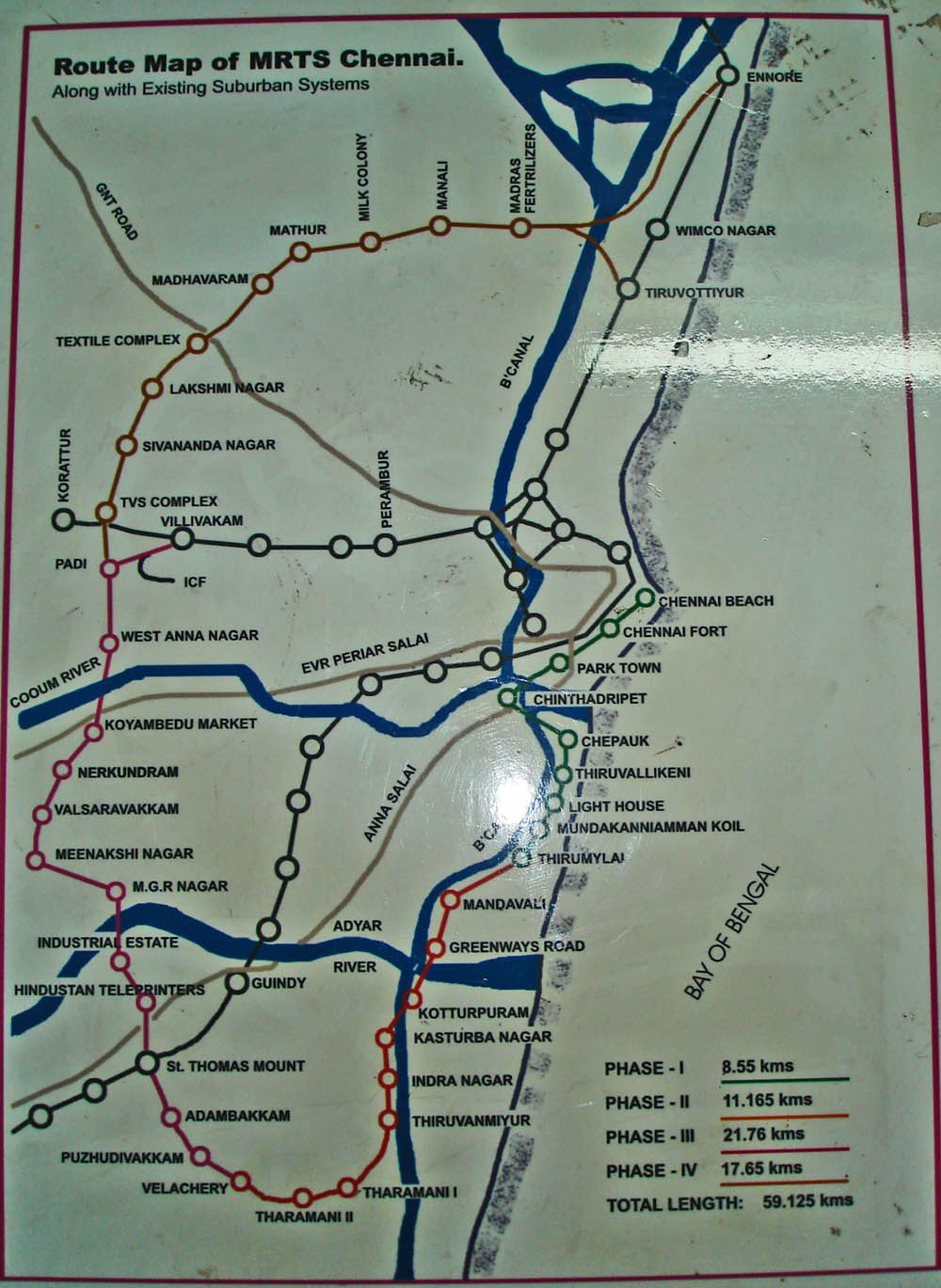|
Line 1 (Chennai Metro)
The Blue Line or Line 1 is one of the two lines of Chennai Metro, Phase 1 Project, the second being the Green line. The line stretches from to . The line consists of 26 stations out of which 13 stations are underground and 13 stations are elevated. Map Stations Blue Line (Main route) The line connects the northeast and the southwest ends of the city. The stations include: See also * Chennai Metro * Chennai Monorail * Chennai Mass Rapid Transit System * Chennai Suburban Railway * Transport in Chennai * List of rapid transit systems in India * List of metro systems This list of metro systems includes electrified rapid transit train systems worldwide. In some parts of the world, metro systems are referred to as subways, U-Bahn or undergrounds. , 205 cities in 61 countries have a metro system. The London ... References Chennai Metro lines Railway lines opened in 2016 {{india-transport-stub ... [...More Info...] [...Related Items...] OR: [Wikipedia] [Google] [Baidu] |
Rapid Transit
Rapid transit or mass rapid transit (MRT), also known as heavy rail or metro, is a type of high-capacity public transport generally found in urban areas. A rapid transit system that primarily or traditionally runs below the surface may be called a subway, tube, or underground. Unlike buses or trams, rapid transit systems are railways (usually electric railway, electric) that operate on an exclusive right-of-way (transportation), right-of-way, which cannot be accessed by pedestrians or other vehicles, and which is often grade-separated in tunnels or on elevated railways. Modern services on rapid transit systems are provided on designated lines between rapid transit station, stations typically using electric multiple units on rail tracks, although some systems use guided rubber tires, magnetic levitation (''maglev''), or monorail. The stations typically have high platforms, without steps inside the trains, requiring custom-made trains in order to minimize gaps between train a ... [...More Info...] [...Related Items...] OR: [Wikipedia] [Google] [Baidu] |
Chennai Park Railway Station
Chennai Park railway station (or just Park station) is one of the railway stations in Chennai, India, on the Chennai Beach–Chengelpet section of the Chennai Suburban Railway Network. It serves the neighbourhood of Park Town, a suburb of Chennai. It is located at about 3 km from Chennai Beach terminus and is situated on Poonamallee High Road, across Chennai Central railway station. It has an elevation of 7 m above sea level. History The station lies in the Chennai Beach–Tambaram section of the Chennai Suburban Railway Network, the first suburban section of the city. With the completion of track-lying work in March 1931, which began in 1928, the suburban services were started on 11 May 1931 between Beach and Tambaram, and was electrified on 15 November 1931, with the first MG EMU services running on 1.5 kV DC. The section was converted to 25 kV AC traction on 15 January 1967. Traffic As of 2012, the station handles about 440,000 passengers a da ... [...More Info...] [...Related Items...] OR: [Wikipedia] [Google] [Baidu] |
List Of Metro Systems
This list of metro systems includes electrified rapid transit train systems worldwide. In some parts of the world, metro systems are referred to as subways, U-Bahn or undergrounds. , 205 cities in 61 countries have a metro system. The London Underground first opened as an underground railway in 1863 and its first electrified underground line opened in 1890, making it the world's oldest metro system. The New York City Subway has the greatest number of stations with 472. The country with the most metro systems is China, with 46 in operation. The Shanghai Metro is the world's longest metro network at and also has the highest annual ridership at 2.83 billion trips. Considerations The International Association of Public Transport (L'Union Internationale des Transports Publics, or UITP) defines metro systems as urban passenger transport systems, "operated on their own right of way and segregated from general road and pedestrian traffic". The terms heavy rail (mainly in North A ... [...More Info...] [...Related Items...] OR: [Wikipedia] [Google] [Baidu] |
Rapid Transit In India
Urban rail transit in India plays an important role in intracity transportation in the major cities which are highly populated. It consists of rapid transit, suburban rail, monorail and tram systems. According to a report published in 2021, a total of 2.63 billion people travelled annually in metro systems across India's fifteen major cities, placing the country as one of the busiest urban rapid transit hubs in the world in terms of ridership. The combined length of of metro systems in India makes it the fourth longest in operation in the world. The Ministry of Urban Development's Urban Transport wing is the nodal division for coordination, appraisal and approval of Urban Transport matters including Metro Rail Projects at the central level. All the interventions in the urban transport by the Ministry of Urban Development are carried out as per the provisions of National Urban Transport Policy, 2006. Terminology Indian cities have various types of urban transit systems ope ... [...More Info...] [...Related Items...] OR: [Wikipedia] [Google] [Baidu] |
Transport In Chennai
Transport in Chennai includes various modes of air, sea, road and rail transportation in the city and its suburbs. Chennai's economic development has been closely tied to its port and transport infrastructure, and it is considered one of the best infrastructure systems in India. History The city of Chennai is the birthplace of the railway system in India. In 1831–33, Madras Parliament first came up with the idea. In 1832, the first proposal of railway under the British administration was made in Madras, 21 years before the first operational railway line in India. Later in 1836 A. P. Cotton, a civil engineer in Madras, advocated the construction of a railroad in India. Meanwhile, in 1835, a short railway line intended to carry granite stones was laid at Chintadripet on an experimental basis, which later became to known as Red Hill Railroad line. Construction on this line began in 1836 and the line was opened in 1837. Despite a few troubles, the line became operational in the ... [...More Info...] [...Related Items...] OR: [Wikipedia] [Google] [Baidu] |
Chennai Suburban Railway
The Chennai Suburban Railway is a commuter rail system in the city of Chennai, Tamil Nadu, India, operated by the Southern Railways branch of Indian Railways. It is the second largest suburban rail network in terms of route length and the third largest in terms of commuters in India. Around 1,000 services are operated daily between 4:00 a.m. and midnight. It is the longest suburban circular route in India covering of . Chennai has a complex railway network. It is the third busiest suburban rail system in India after Mumbai and Kolkata. It has separate tracks for local and express trains. The system uses electrical multiple units (EMUs) operating on alternating current (AC) drawn from overhead wires through the catenary system. The total system spans around of which only have dedicated dual tracks for suburban EMUs, the rest share tracks with other trains and are called mainline EMUs (MEMUs). As of 2013, the suburban sector has 1,000 services, including 250 in the Beach� ... [...More Info...] [...Related Items...] OR: [Wikipedia] [Google] [Baidu] |
Chennai Mass Rapid Transit System
The Chennai Mass Rapid Transit System, a state-owned subsidiary of Indian Railways, is a metropolitan elevated railway line in Chennai, India. Operated by the Southern Railways, it is the first elevated railway line in India and also the country's longest elevated corridor spanning 17 km. Although it is segregated from the Chennai Suburban Railway, they both are operated by Southern Railway and are integrated in a wider urban rail network. Built at a cost of 15,710 million, the line runs within the city limits from Chennai Beach to Velachery, covering a distance of with 18 stations, with an average daily ridership of 100,000 commuters. Connecting the central business area of old Madras with the IT corridor, the section has a potential capacity of 425,000 passengers a day. In 2011–2012, MRTS registered a revenue of 198.9 million, registering a 16.25 percent increase, with 134 trains plying across all the 17 stations. The MRTS is planned to be taken over by the Chennai ... [...More Info...] [...Related Items...] OR: [Wikipedia] [Google] [Baidu] |
Chennai Monorail
Chennai Monorail was a proposal for a number of lines as part of mass transit system for the Indian city of Chennai. Originally the city planned to use monorail on all lines but many were subsequently changed to railways as part of the Chennai Metro. In 2006 a system was proposed in the Long-term Urban Transportation Scheme of Second Master Plan by Chennai Metropolitan Development Authority (CMDA). The state government announced plans to introduce monorail across the city to reduce traffic congestion and to increase the share of public transport in the urban transport network. The aim is to increase the share of public transport in Chennai from 27% to 46% by 2026. The first tender was requested in 2011 but conditions were watered down several times. Tenders have lapsed thrice after failing to attract bidders. In the 2014 plan there were three remaining monorail corridors. As of January 2015, only two bidders remain after the Request For Qualification process of the ongoing ... [...More Info...] [...Related Items...] OR: [Wikipedia] [Google] [Baidu] |
Line 5 (Chennai Metro)
The Red Line or Line 5 is one of the three lines of Chennai Metro, Phase 2 Project. The under construction line stretches from to . The line will consist of 48 stations, out of which 6 are underground, 1 at grade and 41 are elevated. The government has announced feasibility studies to extend metro rail's corridor-5 from Koyambedu to Avadi via Thirumangalam, Mogappair and Ambattur. At present, the proposed corridor-5 links Madhavaram with Sholinganallur via Koyambedu, Alandur and Madipakkam. Phase II E. Sreedharan, in 2013, stressed on the need of a greater expansion of Chennai metro network by undertaking subsequent phases. In July 2016, the then Chief Minister J. Jayalalithaa announced that Chennai Metro Phase 2 would be 104 km long and have 104 stations. In July 2017, in a suo motu statement in the State Legislative Assembly, an extension in Phase II, involving an extension of Line 4 from Lighthouse up to Poonamallee, with the Madhavaram–Sholinganallur Sholinga ... [...More Info...] [...Related Items...] OR: [Wikipedia] [Google] [Baidu] |
Orange Line (Chennai Metro)
The Orange Line or Line 4 is one of the three lines of Chennai Metro, Phase 2 Project . The under construction line stretches from to . The line will consist of 27 stations, out of which 9 are underground and 18 are elevated. Phase II E. Sreedharan, in 2013, stressed on the need of a greater expansion of Chennai metro network by undertaking subsequent phases. In July 2016, the then Chief Minister J. Jayalalithaa announced that Chennai Metro Phase 2 would be 104 km long and have 104 stations. In July 2017, in a suo motu statement in the State Legislative Assembly, an extension in Phase II, involving an extension of Line 4 from Lighthouse up to Poonamallee, with the Madhavaram–Sholinganallur and Lighthouse–Poonamallee lines intersecting at Alwarthirunagar was announced, making Phase 2 116.1 km long. The key focus for Phase 2 is to connect the northern (Madhavaram, Redhills) and southern parts (Siruseri, Sholinganallur) and the east parts of Chennai (Light house, Mylapo ... [...More Info...] [...Related Items...] OR: [Wikipedia] [Google] [Baidu] |
Purple Line (Chennai Metro)
The Purple Line or Line 3 is one of the three lines of Chennai Metro, Phase 2 Project. The under construction line stretches from to . The line will consist of 47 stations, out of which 28 are underground and 19 are elevated. Phase II E. Sreedharan, in 2013, stressed on the need of a greater expansion of Chennai metro network by undertaking subsequent phases. In July 2016, the then Chief Minister J. Jayalalithaa announced that Chennai Metro Phase 2 would be 104 km long and have 104 stations. In July 2017, in a suo motu statement in the State Legislative Assembly, an extension in Phase II, involving an extension of Line 4 from Lighthouse up to Poonamallee, with the Madhavaram–Sholinganallur and Lighthouse–Poonamallee lines intersecting at Alwarthirunagar was announced, making Phase 2 120 km long. The key focus for Phase 2 is to connect the northern (Madhavaram, Thiruvottriyur, Redhills) and southern parts (Siruseri, Sholinganallur) and the east parts of Ch ... [...More Info...] [...Related Items...] OR: [Wikipedia] [Google] [Baidu] |
Moore Market Complex Railway Station
The Chennai Suburban Terminal, or Moore Market Complex (station code: MASS), is a railway terminus cum commercial building complex for the Chennai Suburban Railway system, situated in Park Town in Chennai, India. The name Moore Market comes from a market that used to exist at the site before being demolished to make way for the expansion of the MGR Central station. History Moore Market was originally built to house the hawkers in the Broadway area of Madras. Its foundation stone was laid by Sir George Moore, president of the Madras Corporation in 1898. The building was designed in the Indo-Saracenic style by R. E. Ellis and was constructed by A. Subramania Aiyar. The market, which consisted of a series of shops around a central quadrangle was finally completed in 1900, and had sections for meat, flowers and food items, but was particularly popular for curios including antiques, art, books and pets. Over the years, it gradually took the status of a flea market where one coul ... [...More Info...] [...Related Items...] OR: [Wikipedia] [Google] [Baidu] |






